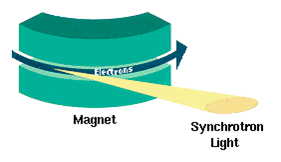|
V1487 Aquilae
GRS 1915+105 or V1487 Aquilae is an X-ray binary star system which features a regular star and a black hole. It was discovered on August 15, 1992 by the WATCH all-sky monitor aboard Granat. "GRS" stands for "GRANAT source", "1915" is the right ascension (19 hours and 15 minutes) and "105" reflects the approximate declination (10 degrees and 56 arcminutes). The near-infrared counterpart was confirmed by spectroscopic observations. The binary system lies 11,000 parsecs away in Aquila. GRS 1915+105 is the heaviest of the stellar black holes so far known in the Milky Way Galaxy, with 10 to 18 times the mass of the Sun. It is also a microquasar, and it appears that the black hole rotates at least 950 times per second, close to the maximum of 1,150 times per second, with a spin parameter value between 0.82 and 1.00 (maximum possible value). Galactic superluminal source In 1994, GRS 1915+105 became the first known galactic source that ejects material with apparent supe ... [...More Info...] [...Related Items...] OR: [Wikipedia] [Google] [Baidu] |
Black Hole Spin Parameter
A black hole is a region of spacetime where gravity is so strong that nothing, including light or other electromagnetic waves, has enough energy to escape it. The theory of general relativity predicts that a sufficiently compact mass can deform spacetime to form a black hole. The boundary of no escape is called the event horizon. Although it has a great effect on the fate and circumstances of an object crossing it, it has no locally detectable features according to general relativity. In many ways, a black hole acts like an ideal black body, as it reflects no light. Moreover, quantum field theory in curved spacetime predicts that event horizons emit Hawking radiation, with the same spectrum as a black body of a temperature inversely proportional to its mass. This temperature is of the order of billionths of a kelvin for stellar black holes, making it essentially impossible to observe directly. Objects whose gravitational fields are too strong for light to escape were first co ... [...More Info...] [...Related Items...] OR: [Wikipedia] [Google] [Baidu] |
Microquasars
A microquasar, the smaller version of a quasar, is a compact region surrounding a stellar black hole with a mass several times that of its companion star. The matter being pulled from the companion star forms an accretion disk around the black hole. This accretion disk may become so hot, due to friction, that it begins to emit X-rays. The disk also projects narrow streams or " jets" of subatomic particles at near-light speed, generating a strong radio wave emission. Overview In 1979, SS 433 became the first microquasar to be discovered. It was thought to be the most exotic case until similar objects such as GRS 1915+105 were discovered in 1994. In some cases, blobs or "knots" of brighter plasma within the jets appear to be traveling faster than the speed of light, an optical illusion called superluminal motion which is caused by sub-light-speed particles being projected at a small angle relative to the observer. The 1996 Bruno Rossi Prize of the American Astronomical Society was ... [...More Info...] [...Related Items...] OR: [Wikipedia] [Google] [Baidu] |
X-ray Binaries
X-ray binaries are a class of binary stars that are luminous in X-rays. The X-rays are produced by matter falling from one component, called the ''donor'' (usually a relatively normal star), to the other component, called the ''accretor'', which is very compact: a neutron star or black hole. The infalling matter releases gravitational potential energy, up to several tenths of its rest mass, as X-rays. (Hydrogen fusion releases only about 0.7 percent of rest mass.) The lifetime and the mass-transfer rate in an X-ray binary depends on the evolutionary status of the donor star, the mass ratio between the stellar components, and their orbital separation. An estimated 1041 positrons escape per second from a typical low-mass X-ray binary. Classification X-ray binaries are further subdivided into several (sometimes overlapping) subclasses, that perhaps reflect the underlying physics better. Note that the classification by mass (high, intermediate, low) refers to the optically vi ... [...More Info...] [...Related Items...] OR: [Wikipedia] [Google] [Baidu] |
Astrophysical Journal
''The Astrophysical Journal'', often abbreviated ''ApJ'' (pronounced "ap jay") in references and speech, is a peer-reviewed scientific journal of astrophysics and astronomy, established in 1895 by American astronomers George Ellery Hale and James Edward Keeler. The journal discontinued its print edition and became an electronic-only journal in 2015. Since 1953 ''The Astrophysical Journal Supplement Series'' (''ApJS'') has been published in conjunction with ''The Astrophysical Journal'', with generally longer articles to supplement the material in the journal. It publishes six volumes per year, with two 280-page issues per volume. ''The Astrophysical Journal Letters'' (''ApJL''), established in 1967 by Subrahmanyan Chandrasekhar as Part 2 of ''The Astrophysical Journal'', is now a separate journal focusing on the rapid publication of high-impact astronomical research. The three journals were published by the University of Chicago Press for the American Astronomical Society unt ... [...More Info...] [...Related Items...] OR: [Wikipedia] [Google] [Baidu] |
NASA
The National Aeronautics and Space Administration (NASA ) is an independent agency of the US federal government responsible for the civil space program, aeronautics research, and space research. NASA was established in 1958, succeeding the National Advisory Committee for Aeronautics (NACA), to give the U.S. space development effort a distinctly civilian orientation, emphasizing peaceful applications in space science. NASA has since led most American space exploration, including Project Mercury, Project Gemini, the 1968-1972 Apollo Moon landing missions, the Skylab space station, and the Space Shuttle. NASA supports the International Space Station and oversees the development of the Orion spacecraft and the Space Launch System for the crewed lunar Artemis program, Commercial Crew spacecraft, and the planned Lunar Gateway space station. The agency is also responsible for the Launch Services Program, which provides oversight of launch operations and countdown management f ... [...More Info...] [...Related Items...] OR: [Wikipedia] [Google] [Baidu] |
GRO J1655-40
GRO J1655-40 is a binary star consisting of an evolved F-type primary star and a massive, unseen companion, which orbit each other once every 2.6 days in the constellation of Scorpius. Gas from the surface of the visible star is accreted onto the dark companion, which appears to be a stellar black hole with several times the mass of the Sun. The optical companion of this low-mass X-ray binary is a subgiant F star. Along with GRS 1915+105, GRO J1655-40 is one of at least two galactic "microquasars" that may provide a link between the supermassive black holes generally believed to power extragalactic quasars and more local accreting black hole systems. In particular, both display the radio jets characteristic of many active galactic nuclei. The distance from the Solar System is probably about 11,000 light years, or approximately half-way from the Sun to the Galactic Center, but a closer distance of ~2800 ly is not ruled out. GRO J1655-40 and its companion are mov ... [...More Info...] [...Related Items...] OR: [Wikipedia] [Google] [Baidu] |
Chandra X-Ray Observatory
The Chandra X-ray Observatory (CXO), previously known as the Advanced X-ray Astrophysics Facility (AXAF), is a Flagship-class space telescope launched aboard the during STS-93 by NASA on July 23, 1999. Chandra is sensitive to X-ray sources 100 times fainter than any previous X-ray telescope, enabled by the high angular resolution of its mirrors. Since the Earth's atmosphere absorbs the vast majority of X-rays, they are not detectable from Earth-based telescopes; therefore space-based telescopes are required to make these observations. Chandra is an Earth satellite in a 64-hour orbit, and its mission is ongoing . Chandra is one of the Great Observatories, along with the Hubble Space Telescope, Compton Gamma Ray Observatory (1991–2000), and the Spitzer Space Telescope (2003–2020). The telescope is named after the Nobel Prize-winning Indian-American astrophysicist Subrahmanyan Chandrasekhar. Its mission is similar to that of ESA's XMM-Newton spacecraft, also launched in ... [...More Info...] [...Related Items...] OR: [Wikipedia] [Google] [Baidu] |
Relativistic Aberration
Relativistic aberration is the relativistic version of aberration of light, including relativistic corrections that become significant for observers who move with velocities close to the speed of light. It is described by Einstein's special theory of relativity. Suppose, in the reference frame of the observer, the source is moving with speed v\, at an angle \theta_s\, relative to the vector from the observer to the source at the time when the light is emitted. Then the following formula, which was derived by Einstein in 1905 from the Lorentz transformation, describes the aberration of the light source, \theta_o\,, measured by the observer: :\cos \theta_o=\frac \, In this circumstance, the rays of light from the source which reach the observer are tilted towards the direction of the source's motion (relative to the observer). It is as if light emitted by a moving object is concentrated conically, towards its direction of motion; an effect called relativistic beaming. Also, light ... [...More Info...] [...Related Items...] OR: [Wikipedia] [Google] [Baidu] |
Synchrotron Radiation
Synchrotron radiation (also known as magnetobremsstrahlung radiation) is the electromagnetic radiation emitted when relativistic charged particles are subject to an acceleration perpendicular to their velocity (). It is produced artificially in some types of particle accelerators, or naturally by fast electrons moving through magnetic fields. The radiation produced in this way has a characteristic polarization and the frequencies generated can range over a large portion of the electromagnetic spectrum. Synchrotron radiation is similar to bremsstrahlung radiation, which is emitted by a charged particle when the acceleration is parallel to the direction of motion. The general term for radiation emitted by particles in a magnetic field is ''gyromagnetic radiation'', for which synchrotron radiation is the ultra-relativistic special case. Radiation emitted by charged particles moving non-relativistically in a magnetic field is called cyclotron emission. For particles in the mildly ... [...More Info...] [...Related Items...] OR: [Wikipedia] [Google] [Baidu] |
VLBI
Very-long-baseline interferometry (VLBI) is a type of astronomical interferometry used in radio astronomy. In VLBI a signal from an astronomical radio source, such as a quasar, is collected at multiple radio telescopes on Earth or in space. The distance between the radio telescopes is then calculated using the time difference between the arrivals of the radio signal at different telescopes. This allows observations of an object that are made simultaneously by many radio telescopes to be combined, emulating a telescope with a size equal to the maximum separation between the telescopes. Data received at each antenna in the array include arrival times from a local atomic clock, such as a hydrogen maser. At a later time, the data are correlated with data from other antennas that recorded the same radio signal, to produce the resulting image. The resolution achievable using interferometry is proportional to the observing frequency. The VLBI technique enables the distance between t ... [...More Info...] [...Related Items...] OR: [Wikipedia] [Google] [Baidu] |
MERLIN
Merlin ( cy, Myrddin, kw, Marzhin, br, Merzhin) is a mythical figure prominently featured in the legend of King Arthur and best known as a mage, with several other main roles. His usual depiction, based on an amalgamation of historic and legendary figures, was introduced by the 12th-century British author Geoffrey of Monmouth. It is believed that Geoffrey combined earlier tales of Myrddin and Ambrosius, two legendary Briton prophets with no connection to Arthur, to form the composite figure called Merlinus Ambrosius ( cy, Myrddin Emrys, br, Merzhin Ambroaz). Geoffrey's rendering of the character became immediately popular, especially in Wales. Later writers in France and elsewhere expanded the account to produce a fuller image, creating one of the most important figures in the imagination and literature of the Middle Ages. Merlin's traditional biography casts him as an often-mad being born of a mortal woman, sired by an incubus, from whom he inherits his supernatural powe ... [...More Info...] [...Related Items...] OR: [Wikipedia] [Google] [Baidu] |





